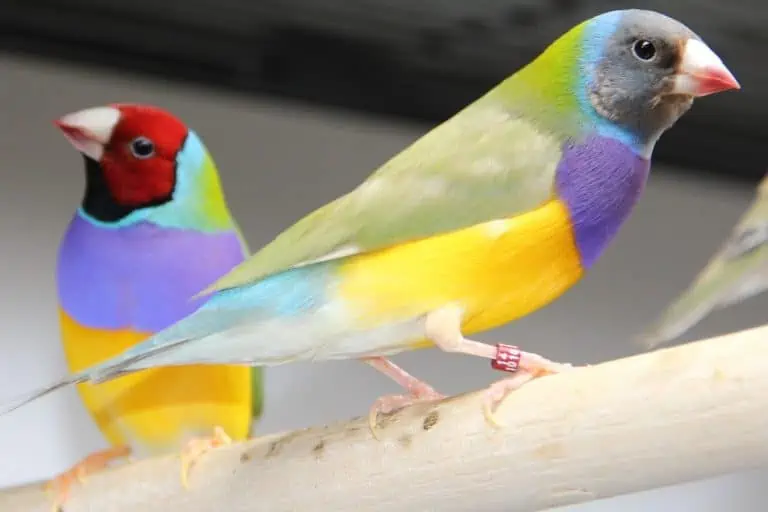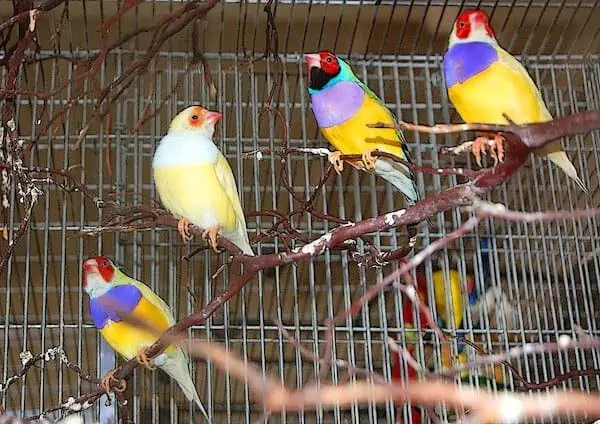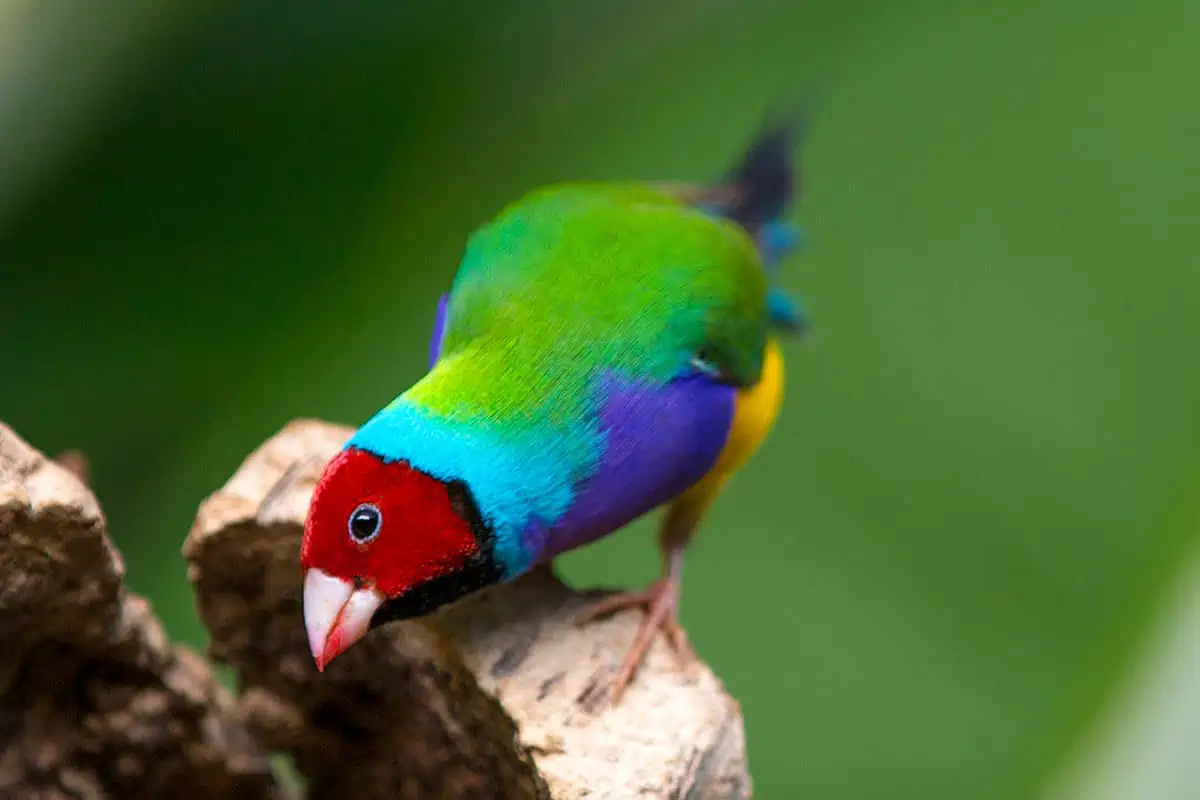Australia is home to an abundance of remarkable flora and fauna. The country’s diverse and vibrant wildlife is also well-known. There is one particularly colorful bird we’d like to highlight, whether those species are in the Outback or in the middle of Sydney. We’ll take a look at photos and facts about the Gouldian finch in this article.
FACTS ABOUT THE GOULDIAN FINCH
The Gouldian finch is one of Australia’s most vividly colored animals and is native to the country. It should not be confused with the Goldfinch.
1. GOULDIAN FINCHES ARE NATIVE TO AUSTRALIA
The Northern part of Australia is home to this indigenous Australian bird. Gouldian finches are most typically seen in the tropical grasslands, thickets, and woodlands with nearby water. They travel a lot during the dry season in search of food and water, despite the fact that they aren’t migratory birds.
2. THESE FINCHES ARE NAMED AFTER A BRITISH ORNITHOLOGIST
In honor of his wife Elizabeth, British ornithologist John Gould officially named the bird in 1844. The “Father of Bird Study in Australia,” John Gould, is regarded by some as such. Rainbow finch, Gould’s finch, and Lady Gouldian finch are some of the other names for this lovely bird.
3. THE GOULDIAN FINCH CAN HAVE THREE DIFFERENT FACIAL COLORS IN THE WILD
Three distinct facial variants of the Gouldian finch may be distinguished by color. Gouldian finches have a black face in 70-80% of cases, while red faces are present in 20-30% of the population. A Gouldian finch’s face may be tinted yellow in extremely unusual circumstances. In reality, the yellow variation occurs in one out of every 3,000 individuals.

4. MALES AND FEMALES LOOK SIMILAR WITH SLIGHT DIFFERENCES IN COLOR
The Gouldian finch has a variety of other bright colors in addition to their lovely coloring. Black, green, yellow, and red patterns cover both the male and female species. Females have slightly duller plumage than males, despite both sexes having the same color patterns.
The breast of a bird can be used to identify a male and female. Female breasts are described as a lighter mauve color, whereas males have a vivid purple breast.
Adolescent Gouldian finch heads are gray-green in color, while adult Gouldian finches have red, black, or yellow faces.
5. GOULDIAN FINCHES ARE EXTREMELY SOCIAL BIRDS
This is an understatement when it comes to how sociable these birds are. Gouldian finches are often found in mixed flocks, with the exception of during mating season. Long-tailed finches and masked finches make up most of these flocks, which may number in the thousands. They’re most active during the day and forage in small groups on the ground or in the air, usually in small groups.
6. GOULDIAN FINCHES ARE QUIET BIRDS
The Gouldian finch, unlike other birds, isn’t known for its singing or complicated melodies. Instead, a high-pitched “ssitt” sound is what they make. Different trills, chirps, and hisses have been documented in Gouldian finches. Because their vocalization isn’t grating to the human ear, this species is one of the unlikeliest to cause disruption.
7. GOULDIAN FINCHES ARE GRANIVORES
The majority of a granivore’s diet comes from grains and seeds.
The beak of the Gouldian finch was created specifically to assist with breaking open hard seed casings in order to extract the nourishment. A Gouldian finch will consume up to 35% of its body weight in seeds on a normal day. Grass seeds make up the majority of their diet.

8. MALES COURT FEMALES BY SHOWING OFF THEIR COLORS
The first weeks of the dry season are when most breeding occurs. By bobbing around and ruffling his feathers to display his bright plumage, the male Gouldian finch will attempt to attract their desired female.
9. GOULDIAN FINCHES NEST IN TREE CAVITIES AND PARENT TOGETHER
Gouldian finches will generally make a nest in the hollow of a tree when they decide to mate. Snappy Gum, Northern White Gum, and Salmon Gum Eucalyptus are among the common trees used for nesting. Both parents will incubate for up to two weeks, with the female laying between 4-8 eggs and both parents taking turns. Both parents look after the baby Gouldian finches after they hatch.
10. NEWLY HATCHED GOULDIAN FINCHES HAVE SPECIAL MOUTH MARKINGS
Unusual markings may be seen inside the mouths of certain hatchlings. This appears to be alarming at first glance, but it is an evolutionary event that occurred when previous broods withstood a particular parasite. The Gouldian finch, as well as a few African finches, have this marking.

11. GOULDIAN FINCH HATCHLINGS BECOME FULLY INDEPENDENT AT 40 DAYS OLD
Baby Gouldian finches are altricial when they’re first born. They emerge completely bald and blind from this description. Between the ages of 19 and 23 days after hatching, baby Gouldian finches become fledglings. Yet, until they are about one month old, they do not become fully independent.
12. GOULDIAN FINCHES ARE POPULAR IN AVICULTURE
The capturing and breeding of birds is known as aviculture. They are popular choices because to their vivid colors, low noise, compatibility with other finch species, and minimal care requirements. Trapping was permitted until 1981, and it began in 1897. Gouldian finches were being shipped in large numbers at the time, but that practice is now prohibited.
13. MANY COLORATIONS CAN BE FOUND IN CAPTIVITY
Several countries still have vast populations of Gouldian finches due to years of export and breeding in captivity. Several color mutations have been produced as a consequence of these captive breeding programs.

14. GOULDIAN FINCHES ARE STILL SOLD AS PETS
Certain breeders are still selling Gouldian finches as pets. They are quiet, lovely to behold, and don’t need a significant amount of exercise on the plus side. They need at least one companion bird, a big cage, and they are timid with humans. They are social in nature, thus they will need one. They don’t like being handled and are known to have a difficult time forming relationships.
15. THE GOULDIAN FINCH SPECIES IS ENDANGERED
With a national wild population of 2,500 mature birds, the Gouldian finch is considered endangered in Australia. Some of the larger remaining populations are protected by the Australian Wildlife Conservancy, which is researching ways to increase their numbers. Wildfires in the late dry season and feral herbivores (pigs, horses, and other animals) are two of the greatest threats they face today. The availability of their primary food source, grass seed, is impacted by both of these factors.
